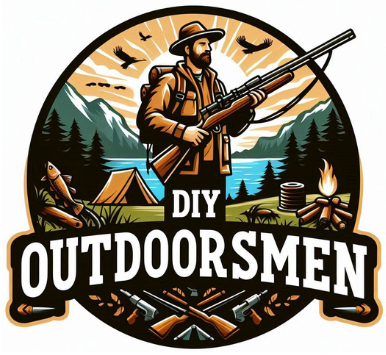Contents
- 1 Basic Elk Needs: What to Look For When Scouting
- 2 How I Use Online Mapping Tools to “E-Scout” for Elk
- 3 What I Do When Scouting for Elk On the Ground
- 4 Challenges With Elk Scouting and How to Handle Them
- 5 Advanced Tips to Get More Out of Your Scouting and Mapping
- 6 Useful Gear and Physical Prep I Recommend
- 7 Common Questions About Elk Scouting and Mapping
- 8 Bringing It All Together: My Elk Scouting and Mapping Strategy
Elk scouting and habitat mapping are must-have skills for anyone looking to enjoy a productive elk hunt, especially if you’re new to it. My first season hunting elk opened my eyes to how much good preparation ups your odds. From figuring out where elk eat, drink, and hide to putting mapping tools to work the smart way, here’s what I’ve learned about getting started with elk scouting and mapping their habitats.
QUICK LOOK: Tips for Elk Scouting with Online Tools and Apps.
- Map Layers: Platforms like onX Hunt, GOHUNT, and Google Earth let you check public land boundaries, unit lines, trails, roads, and even wildfire history. I always toggle these on to see the layout and brainstorm where to zero in.
- Topography: Reading topo maps took practice, but I can now spot saddles, benches, drainages, and ridges. These features often turn out to be elk travel routes or bedding cover. I hone in on gentle benches on north slopes and finger ridges that link bigger patches of forest.
- Remote Spots: I zoom out to locate chunks of land a mile or more from the nearest road or trending trail. Elk flock to these quieter zones once hunting pressure picks up. Even something simple like a stream that’s tough to cross can mean finding overlooked ground.
- Historical Wildfires: If I find burn scars five years old or less, I flag them. Recent burns deliver a blast of food elk crave, and cover regrows quickly as well.
- Water: Springs, seeps, and creeks get marked, along with wallows and ponds found by studying satellite imagery—sometimes they don’t show up on basic maps.
Basic Elk Needs: What to Look For When Scouting
Elk have pretty simple requirements, but tracking down where all their needs come together is the real challenge. Understanding what elk need and where to find them is always the first step I take before hitting the hills.
Elk are mostly grazers, although they’ll switch to browsing when grass gets scarce. I keep an eye out for meadows and clearings thick with grasses, forbs, and shrubs. Burned areas from a few years ago often explode with new growth that elk love. Ponds and creeks are also on my radar since elk usually visit water almost every day, especially during the summer and early fall.
As for cover, elk protect themselves by bedding down in timber, especially dense stands of pines or firs. North-facing slopes stay cooler and offer more shade and moisture. Elk generally shy away from exposed hillsides during the hottest hours and when humans are in the area.
I scout for secluded spots up to a mile or more from the nearest road or main trail. Elk often travel between feeding areas and bedding cover early and late in the day, so travel corridors linking these resources are essential. Setting a pop-up blind near these travel corridors can be very productive.
How I Use Online Mapping Tools to “E-Scout” for Elk
Putting mapping tools to work has completely switched up how I plan my hunts. These digital resources help me target areas before even setting foot in elk country. Here’s my game plan for digital scouting:
- Map Layers: Platforms like onX Hunt, GOHUNT, and Google Earth let you check public land boundaries, unit lines, trails, roads, and even wildfire history. I always toggle these on to see the layout and brainstorm where to zero in.
- Topography: Reading topo maps took practice, but I can now spot saddles, benches, drainages, and ridges. These features often turn out to be elk travel routes or bedding cover. I hone in on gentle benches on north slopes and finger ridges that link bigger patches of forest.
- Remote Spots: I zoom out to locate chunks of land a mile or more from the nearest road or trending trail. Elk flock to these quieter zones once hunting pressure picks up. Even something simple like a stream that’s tough to cross can mean finding overlooked ground.
- Historical Wildfires: If I find burn scars five years old or less, I flag them. Recent burns deliver a blast of food elk crave, and cover regrows quickly as well.
- Water: Springs, seeps, and creeks get marked, along with wallows and ponds found by studying satellite imagery—sometimes they don’t show up on basic maps.
After I’ve marked two or three good-looking areas online, I download those maps on my phone so I’m never lost, even when cell service drops out.
What I Do When Scouting for Elk On the Ground
Once my map is filled with locations to check, it’s time to get outside. Boots on the ground gives me a sense of what’s going on and if the spot is elk-friendly.
I stay alert for proof that elk use the area. Here are clues I watch for:
- Fresh tracks crossing trails or squishing through mud
- Droppings, especially moist ones that mean recent elk activity
- Tree bark scraped or rubbed by antlers
- Beds pressed into grassy patches near heavy timber
- Obvious trails between feeding grounds and denser cover
- Wallows—muddy holes elk use to cool down and layer their scent
I also put a solid effort into glassing in the mornings and evenings. Finding a lookout that covers feeding meadows or open ridges pays off. Spotting even a single elk tells me I’m on the right path.
Challenges With Elk Scouting and How to Handle Them
Elk scouting throws out curveballs. Elk get wise to hunters who don’t expect surprises or miss small details. Here’s how I’ve handled a few common hurdles:
- Changing Elk Patterns: Weather, pressure, the rut, and natural migrations shuffle elk herds overnight. What’s full of elk sign in August could be empty when rifle season rolls around. Checking in throughout the year helps me predict their movement.
- Steep Terrain: Elk live in rough, gnarly country for safety. That terrain wears me out quickly. I prep for elk season by hiking tough terrain and allowing extra time for those hard climbs.
- Access Limitations: Some hidden gems look perfect online but are blocked by private property or tricky rivers. Double-checking access with digital boundary layers has saved me from wasted bushwhacking.
- Weather: Fall storms or sudden heat will push elk to shaded spots or better water. I hunt areas with some elevation range, giving elk options to move when the weather changes.
Advanced Tips to Get More Out of Your Scouting and Mapping
Once you’ve locked down the basics, mixing in some advanced tips made all the difference for me. Here’s what took my elk scouting up a notch:
Seasonal Migration: Knowing when and how elk switch between summer, fall, and winter ranges pays off. I focus on the higher ground covered in green during summer. As the weather cools, I scout the travel corridors where elk funnel down to easier country.
Studying Hunting Pressure: Some apps show where most people enter a unit or set up camp. I use this info to dodge crowded places and head further or approach from a less popular angle, even if it means more hiking.
Watching Habitat Edges: Edges where thick woods touch open meadows or burns are prime. Elk often sleep in one and eat in the other. These transition spots are always worth a close look.
Using Trail Cameras: If the rules allow, a camera reveals exactly when elk come through tight spots like saddles, wallows, and main paths. This saves me loads of legwork.
Putting together digital tools and time spent on the ground makes dialing in elk hotspots much quicker and gives me more confidence on opening day.
Useful Gear and Physical Prep I Recommend
Being ready to scout elk country means packing the right gear and getting your body prepped. My must-haves:
- Sturdy boots since elk country is tough and often steep
- Layers and rain gear for any weather
- Binoculars and sometimes a spotting scope
- Charge phone or GPS with offline maps ready
- Plenty of water and snacks because trips always go longer than planned
- First aid, headlamp, and maybe trekking poles for balance
Personal fitness is a big deal, too. My luck improved by training with heavy packs and tackling tough hikes before the season began. I suggest hill repeats with some weight to get ready for the demands of elk country.
Common Questions About Elk Scouting and Mapping
Newer hunters always have questions. Here are a few I hear all the time, along with what I’ve learned from actually doing it:
How early should I start scouting for elk?
A month or two ahead of hunting season is ideal for learning movement patterns, but even a weekend of last-minute scouting can help you spot fresh changes or signs.
What’s the best way to tell if elk are in the area?
Recent tracks and droppings, chewed-up plants, beds, and new rubs all mean elk have been around. If you catch a whiff of elk or find a muddy wallow with prints, chances are they’re close
How important is physical preparation?
Elk country is tough. Good fitness lets me cover more ground, stay out longer, and pack more gear without burning out. Every year, I see people give up because the terrain is just too much, so being in shape counts.
Can I scout without expensive gear?
Absolutely. Free apps, old boots, and a secondhand pair of binoculars will get you going. The main investment is hours spent in the field, not money.
Bringing It All Together: My Elk Scouting and Mapping Strategy
Piling together good maps and time outdoors has made the biggest difference for me. I always go after places offering food, water, and shelter, and I adjust as elk shift with the season. These steps mean I’m ready whenever opening day rolls around, prepared for long days in elk country.
The more I hike and poke around, the bigger my list of backup spots if elk move or pressure picks up. Tracking down elk isn’t always straightforward, but with steady scouting and a mapping routine, it’s become way more reliable—and honestly, more rewarding and fun every year.
Most Recent Articles:
- Bow Hunting For Mule Deer
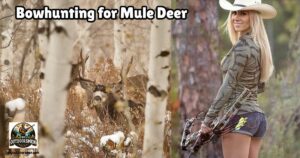
- Best Public Land Mule Deer Hunting
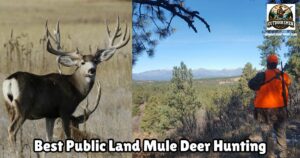
- Drone-Based Scouting Services For Mule Deer
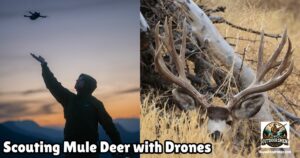
- Late Season Mule Deer Hunting Tips
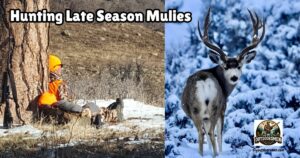
- 8 Tips for Dealing with Hunting Pressure While Mule Deer Hunting
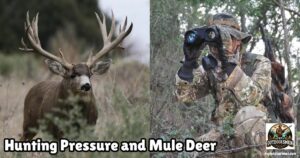
- TideWe Portable Hunting Blinds
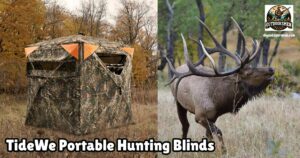
As always, stay safe, enjoy the journey, and please try to leave it cleaner than you found it. If you have any comments, questions, ideas, or suggestions, please leave them in the comment section below, and I’ll get back to you ASAP. You can follow us on YouTube: Man Art Creations for videos of our DIY Adventures.
P.S. Thanks so much for checking out our blog; we really appreciate it. Just so you know, we may receive a commission if you click on some of the links that appear on our site. This helps us keep our content free and up-to-date for everyone. We appreciate your support!
